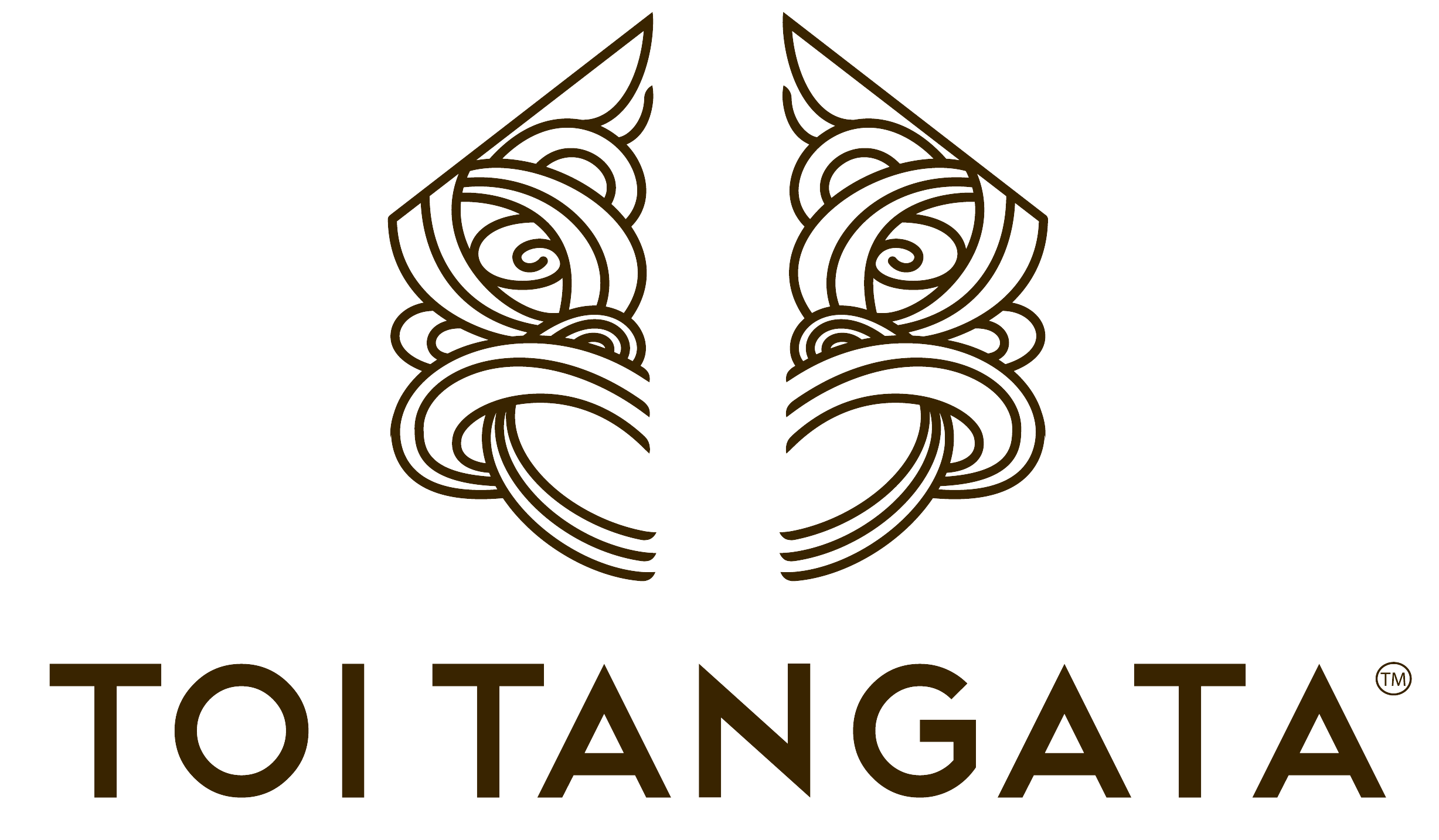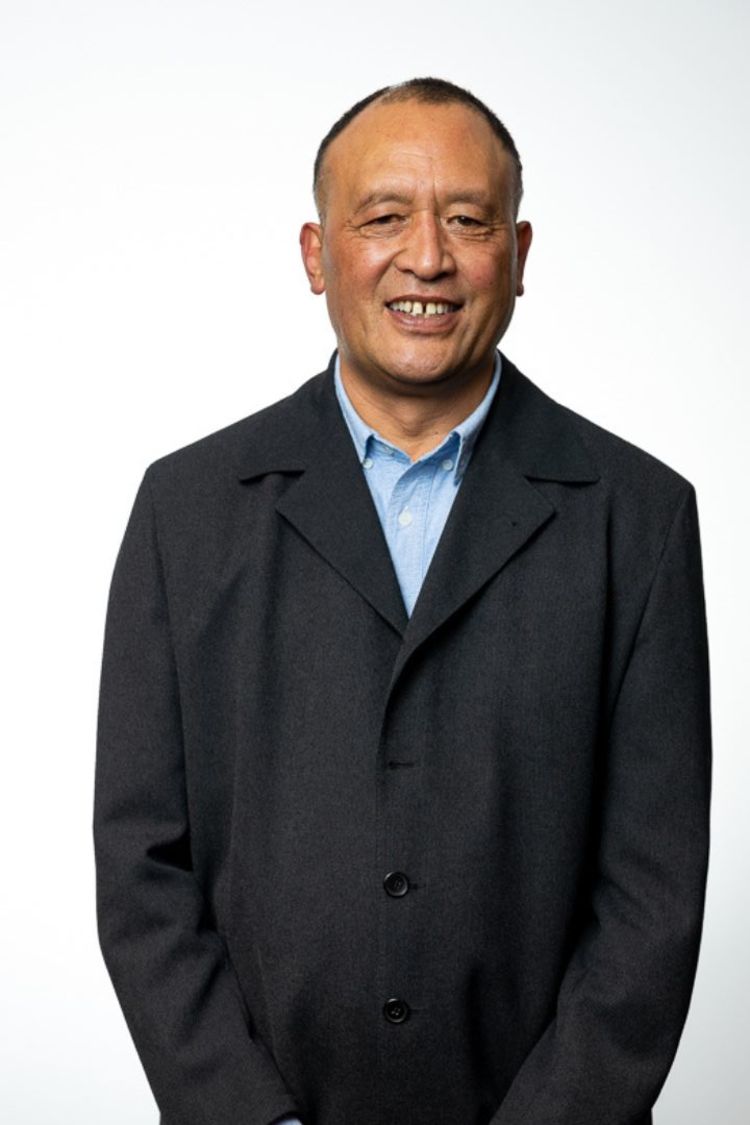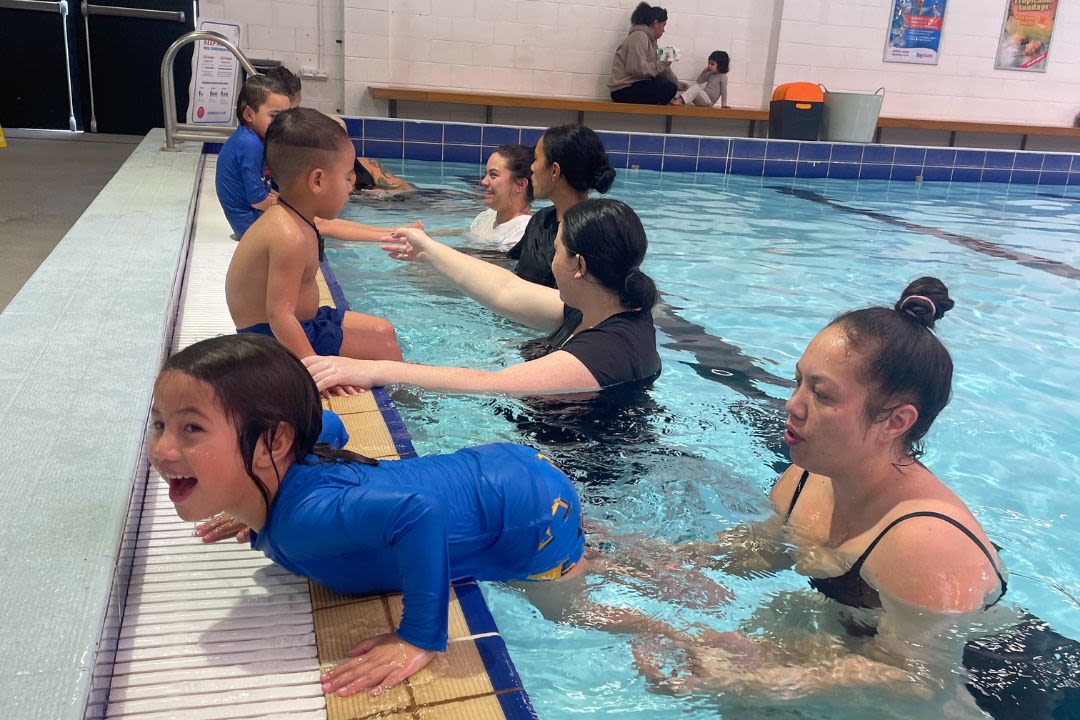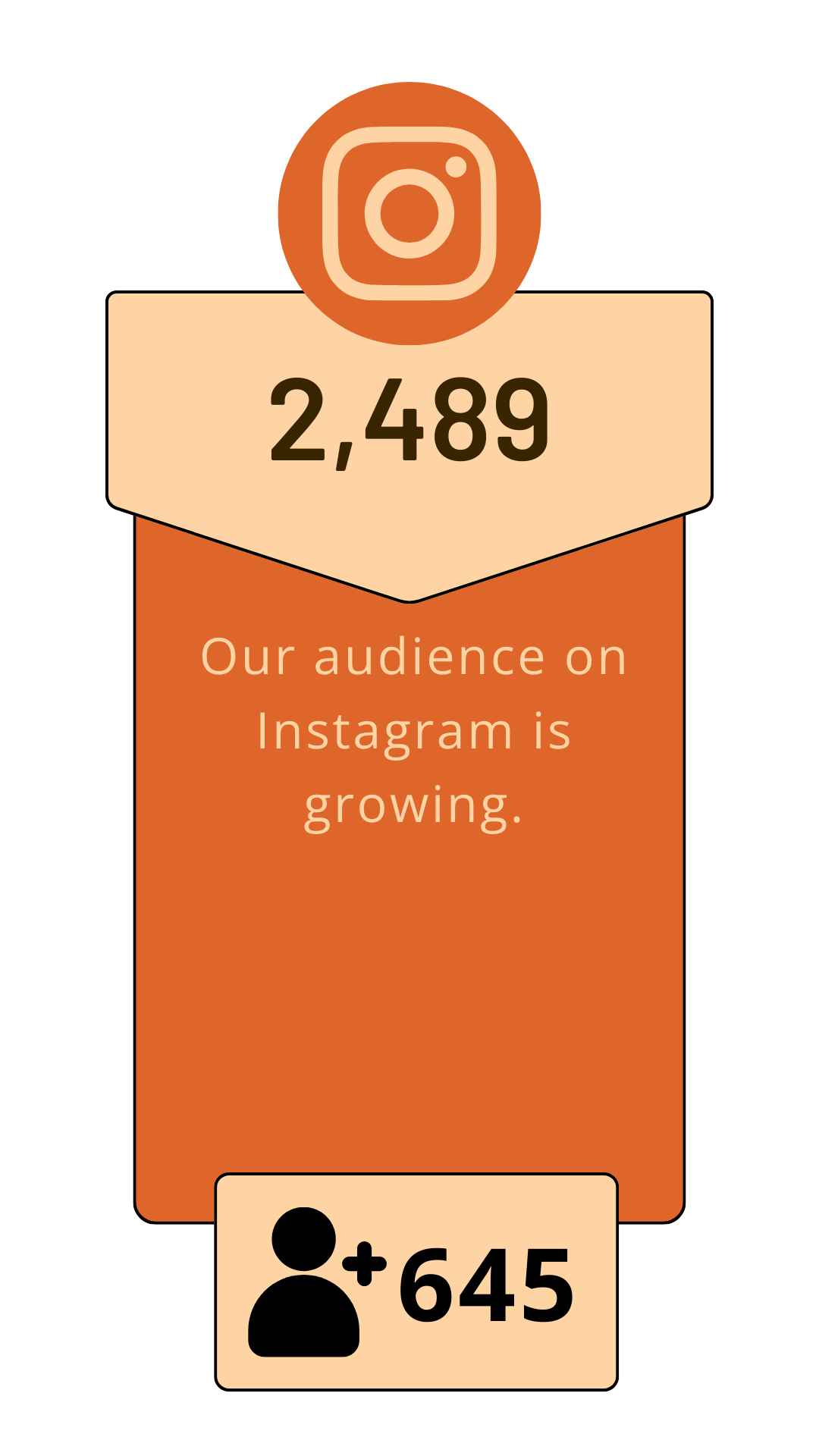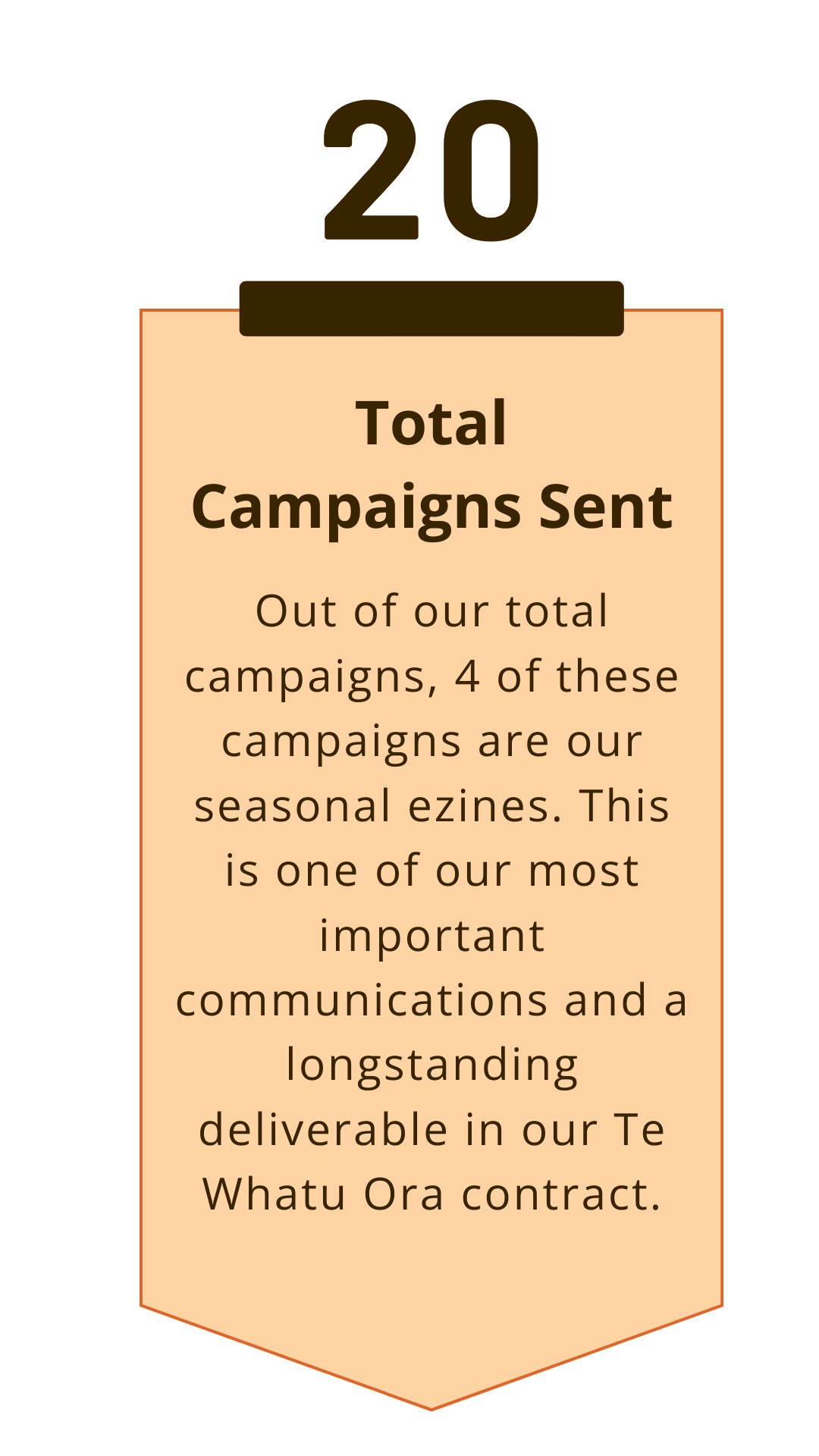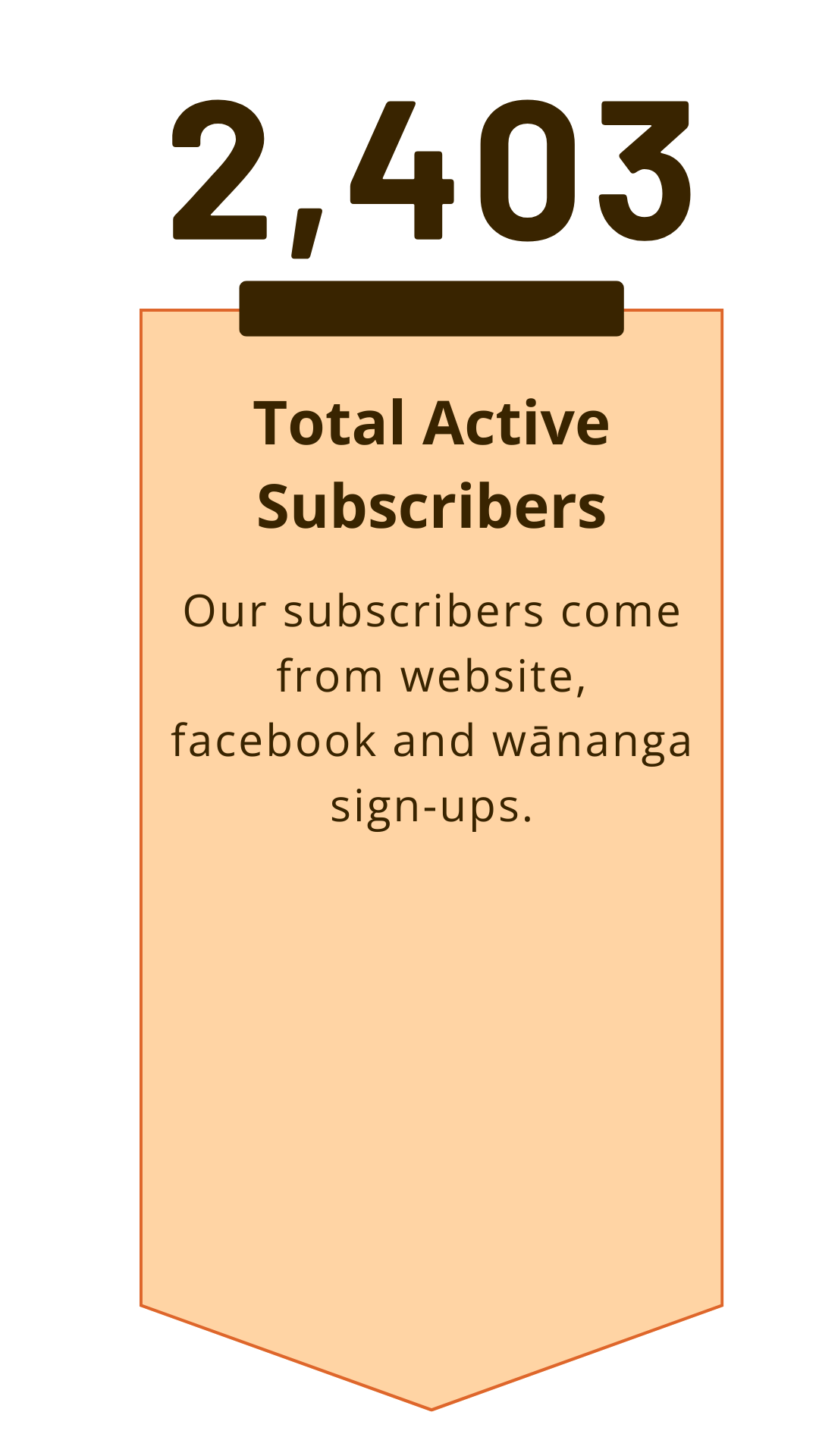Arotake ā-tau
Annual Review
2023-2024

Mihi
Maiea te manu nui o te rangi, kōrihirihi te manu kōkiri ata, e kō, e kō, e ara e!
E ara, e ngā tini ōhākī a ngā mātua tūpuna,
E ara, e ngā tini whanaketanga a te iwi,
E ara, e ngā tini kaupapa Māori,
Toi te iwi Māori, toi te mana Māori, ka puta, ka ora!
E tangi tīkapa tonu nei te ngākau ki a rātou mā i tākaia ki te kupu, i rumakina ki te roimata, ngā waka tōtara i whakaterea rā ki te muri. Waiho mai ko waikamo, ko murimuri aroha hei kai i te ao, i te pō, haere. Kia waihape mai ki a tātou, ngā mōrehu o nunui mā, tēnā tātou.
E mihi kau ana ki a tātou e oke tonu nei i ngā tini kaupapa hei painga mō te iwi, mō ā tātou tamariki tae noa atu ki ō tātou uri. Ahakoa ngā pierenuku o te wā, kua kitea he oranga i roto i ngā huinga tāngata puta noa i te motu e aneane ai ngā mata toki o te motu. Koia tēnei te tuari ake i ngā kaupapa huhua i whai wāhi atu ai a Toi Tangata i te tau kua hori ake nei.
Nau mai ki tā mātou kete kōrero.


Our Strategic Plan
Toi Tangata is a national Māori health agency dedicated to enhancing health and wellbeing through kaupapa Māori approaches. We are commited to promoting healthy living and learning guided by mātauranga tuku iho and tikanga Māori.
Led by our vision and mission, we empower whānau and hapori by developing, delivering and championing kaupapa driven by mātauranga Māori into hauora, kai, kori and tākaro.
Our services include professional development, spanning the health and education sectors while also connecting with hapori advocates. We collaborate with kaimahi and whanau to create lasting, positive change.
Operating nationally across Aotearoa, our main office is located in Tāmaki Makaurau. We are committed to reaching hapori throughout the country, ensuring our kaupapa are accessible to all.
Tangata Tū, Tangata Ora
Te Pae Tawhiti
Mā te mātauranga tuku iho, ka tipu, ka ora, ka toi tangata e!
Te Pae Tata
Overview
E ngā ringa raupā, e te akunga houhare, e te tini kaihoe e whakatere ana i te waka nei o Toi Tangata, ākina a tai, ākina a ngaru tēnei ka mihi atu ki a koutou katoa!
Ka mahara noa ki a rātou mā kua riro. Kauria atu rā te moana o āke āke kia ū atu ai ki tua o Paerau. Tātou te hunga takatū, ngā manahau e rere atu nei!
2024 has been an interesting and challenging year for Te Ao Māori, Aotearoa and Toi Tangata. Government changes, policy shifts, funding cuts and economic recession have negatively impacted on Māori well-being and livelihoods. The attempt to reframe Te Tiriti principles and the perceived marginalisation of te reo Māori have been concerning. However, iwi, Māori organisations and our tauiwi allies have shown resilience and fortitude in resisting those forces. Inspired leadership, like that of the late Ariki Tūheitia Pōtatau Te Wherowhero VII, under the mantle of kotahitanga and mana motuhake, has guided us in exploring solidarity and independence to empower ourselves and future generations.
Toi Tangata remains committed to strengthening our sharing of mātauranga across different domains. Despite obstacles, we have grown our reach and deepened our knowledge. Our wānanga delivery continues to expand, and we have adapted positively to change.
Our board member and resident Māori health research expert, Dr Isaac Warbrick, has moved on to further his teaching and researching commitments. We look forward to welcoming three new board members at the AGM in December, each bringing innovative ideas to enhance our collective skills and better serve our communities.
The Toi Tangata whānau, board members, and kaimahi remain committed to empowering and enabling our communities towards a positive future.
Kia āta whakatere te hoe o te waka nei kia eke panuku, eke Tangaroa, haumī e, hui e, tāiki e!
Darrio Penetito-Hemara | Kaiwhakahaere Matua
Ngāti Hauā, Ngāti Tamaterā, Ngāpuhi
Hakopa Tapiata | Heamana Poari
Te Arawa, Ngāti Porou
Darrio Penetito-Hemara
Darrio Penetito-Hemara
Hakopa Tapiata
Hakopa Tapiata

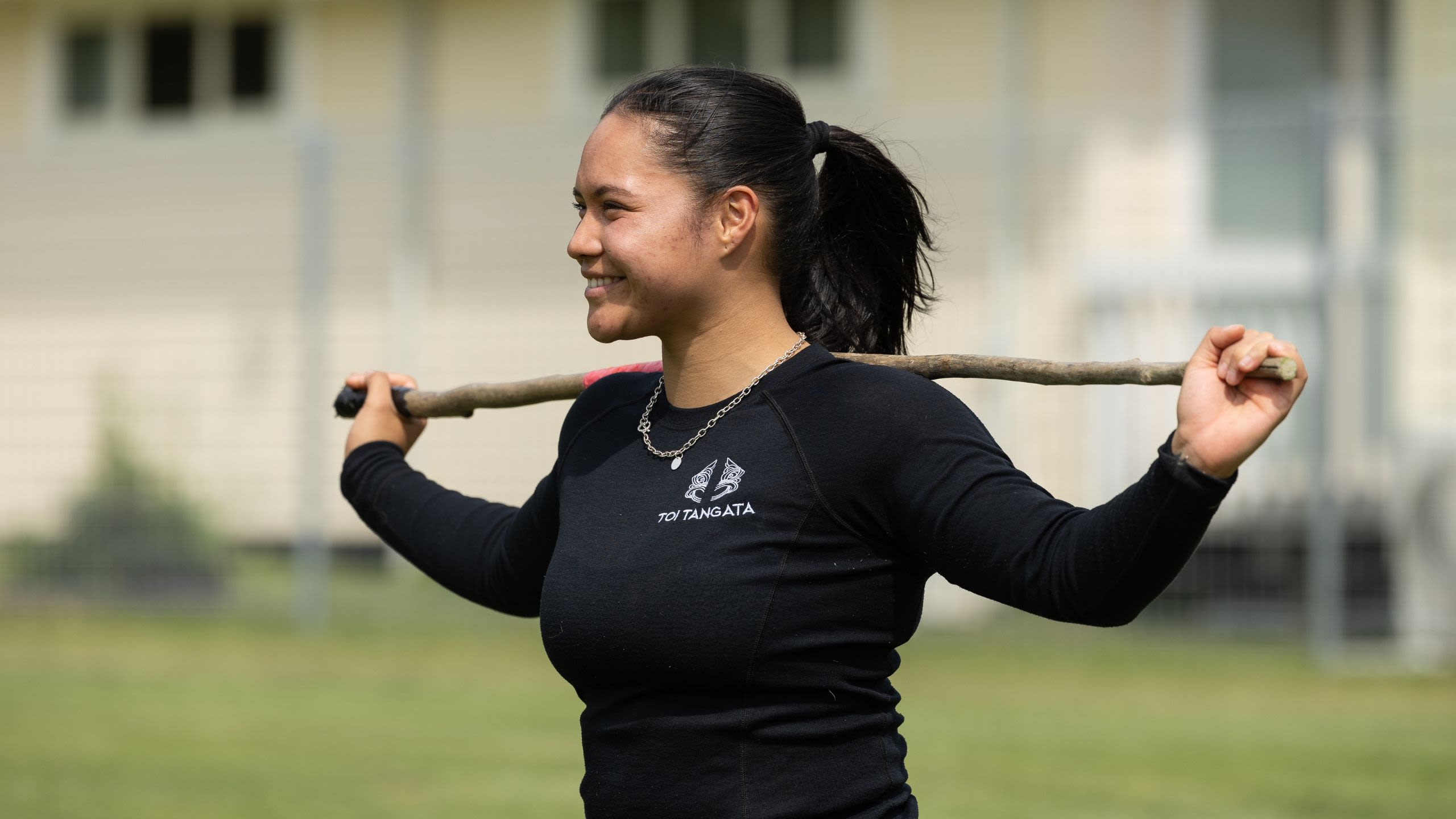

Toi Tangata Hui ā Tau 2024:
Ki Uta Ki Tai – From the Mountains to the Sea
The Toi Tangata Hui ā Tau 2024, themed “Ki Uta Ki Tai,” sought to emphasise the intrinsic connection between the wellbeing of the land, water, and people (oranga whenua, oranga wai, oranga tangata). Held from 31 January to 2 February 2024, this gathering marked the first in-person Hui ā Tau since 2019, and took place at Ārai te Uru Marae and Puketeraki Marae in Ōtepoti, Dunedin. Our objective was to foster collaboration, knowledge sharing, and reconnection to mātauranga Māori through facilitated sessions and hands-on workshops.
The Hui ā Tau featured a diverse range of kaikōrero who shared their insights on Māori physical activity, nutrition, mātauranga Māori, and kaitiakitanga. Hands-on workshops on waka ama, māra kai, snorkelling, and a hīkoi around Huriawa Pā allowed participants to engage with mātauranga Māori in practice, strengthening their connection to the taiao, with a particular focus on the Ārai te Uru coastline.
The Toi Tangata Hui ā Tau 2024 served as a reminder of our collective responsibility to protect and nurture the taiao. This year’s success would not have been possible without the contributions of our partners and facilitators, including Hīkoi4life, Arai te Uru Marae, Puketeraki Marae, Dive Otago, Tangaroa Ara Rau, and Water Safety NZ.
Planning is underway for the Toi Tangata Hui ā Tau 2025, which will be held in Waiwhetū, Lower Hutt.

Kai ora: Restoring local Māori food systems
Alongside Southern Kaipara marae, including Te Kia Ora marae, Te Aroha Pā marae and Reweti marae, Toi Tangata engaged in research around local Kaipara food systems over the past year. Funded by the National Science Challenges through Te Kōmata o te Tonga, Deep South, we supported the marae to interview kaumātua about their childhood memories of kai. These interviews were written up into a research report by the Toi Tangata research support team. Highlights of the research include old place names that were mentioned, walking paths to kai gathering places mentioned, old methods of harvesting shared, and the learning and mahitahi of many generations together. Through the research, the damage and disruption caused by colonial administrators of the time was made evident - from the straightening out of awa, to the impacts of having accessways to beaches and estuaries cut off. Kaumātua reflected upon those times with much joy, and also sadness, reflecting on how things had changed.
Although the contracted research has come to an end, Toi Tangata will continue to support the marae to actualise the outcomes and learnings from the research project. The next phase of this kaupapa will entail GIS mapping the place names and kōrero mentioned onto maps of the Kaipara alongside whānau, and in particular, rangatahi.
Te Kare o Te Wai
Early in 2024, Toi Tangata identified a need for te reo Māori-delivered swimming lessons for tamariki and whānau in Te Moana-a-Toi. In response, we launched Te Kare o te Wai, a pilot programme delivering weekly swimming lessons to tamariki, whānau and kaimahi from local Kōhanga Reo.
Over the course of term two, seven lessons were successfully delivered at the Greerton Aquatic and Leisure Centre. The kaupapa saw high engagement, facilitated by the proximity of the kōhanga to the venue and the timing of sessions around tamariki nap times.
A qualified kaiako kauhoe with expertise in water safety and te reo Māori led the sessions. These sessions were divided into three 30-minute segments, tailored to different age and ability groups. The programme required a 1:1 parent-to-child ratio, ensuring whānau and kaimahi were actively involved. On occasions when the kaiako kauhoe was unavailable, an experienced mātua proficient in te reo Māori stepped in, maintaining the continuity and quality of the sessions.
I loved the waiata, the resources used, the instructors were great… even the tāne who filled in for the instructor. Learning reo Māori and having it translated into English when needed as I am still very much learning. This was a very safe space to learn te reo Māori
Te Kare o te Wai activities focused on uru haumanu ki te wai/safely entering the water, kia haumaru te tutoho/safely submerging in the water, kia mānu kia ora/learning to float. Tikanga was woven throughout the sessions, starting with karakia, and incorporating waiata Māori and mihimihi. He Pī Ka Rere kēmu were used during the sessions alongside waiata and kēmu that the kōhanga reo already knew. These aspects created a positive and safe kaupapa Māori environment for tamariki and whānau to engage in the learnings about wai safety and reo Māori.
The key learning for me was definitely water confidence prospering for my baby. My son continuously asks when we are having the next kaukau session.
The successful pilot demonstrated the potential for future implementation. Feedback from whānau highlighted the responsiveness to local needs and its effectiveness in promoting water safety skills within a kaupapa Māori framework.
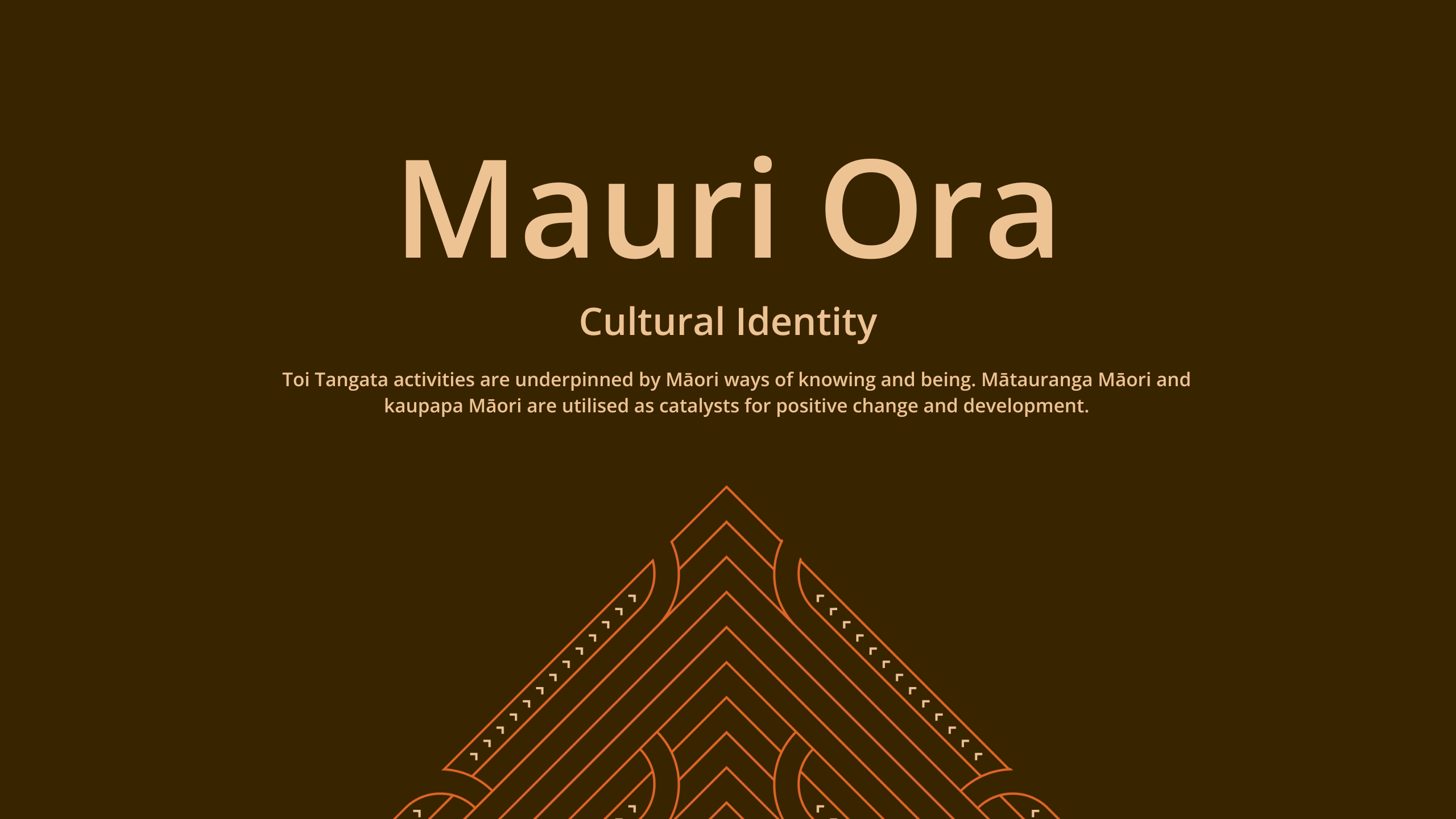


Growing the Puna
Fostering Tauira Māori through Kaupapa Māori Internships
Growing the Puna continues to offer transformative opportunities for Māori students to develop culturally grounded skills in kori, kai Māori, tākaro, health, and wellbeing. Through hands-on learning and community-focused research, these internships are empowering the next generation of leaders to strengthen their connection to kaupapa Māori and apply it in modern contexts.
The primary objective of the Growing the Puna internship is to provide tauira Māori with practical experience in kaupapa Māori-led initiatives, while encouraging the integration of Māori values and knowledge into areas such as kori, kai, tākaro and hauora.
This year saw the successful completion of internships by three tauira:

|
Erana Barlow (Massey University) created a resource entitled Nourishing our Whakapapa, blending traditional Māori knowledge with modern nutrition science. Her work focused on how kai can impact wāhine throughout their menstrual cycles, including an innovative Īkura Dial, aligning kai with the Maramataka. |

|
Stephanie Jasperse (Otago University) developed a resource mapping tīpuna hiking tracks of Kāi Tahu, highlighting the pūrākau associated with these pathways. |
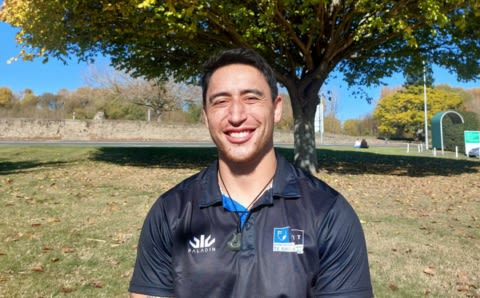
|
Matiu Spring (EIT), applied pūrākau to physical activity, focusing on the Ōtatara Pā. His final project used movement and teamwork to retell the narrative of the Pā. |
The kaupapa has positively impacted tauira, and the communities Toi Tangata serves with the interns developing practical skills and deepening their connection to their whakapapa and cultural identity. The resources they created have the potential to benefit Māori communities in health, education, and physical activity, fostering better engagement with traditional knowledge and practices.
Looking forward, we plan to build on the strong relationships already established with Otago and EIT through kanohi ki te kanohi engagement. Our GTP lead, Chelsea Cunningham-McLean, aims to extend this approach to other universities, including Massey, AUT, Auckland, and also institutions such as the New Zealand Institute of Sport, to create a broader network of partners that will sustain the momentum of the internships.
We were fortunate to collaborate with Te Papa Tākaro o Te Arawa and Mātaiao, participating in their respective wānanga, which added significant value to the internships. These collaborations enriched the students’ learning experiences, connecting them to wider kaupapa Māori initiatives. Additionally, key partnerships with Massey University, Otago University, and EIT played a crucial role in the success of the internships, providing essential academic support that ensured the students were well-equipped to thrive in their roles.
The Growing the Puna internships have been a resounding success in the 2023-24 period offering practical, culturally relevant learning opportunities for tauira Māori. We acknowledge the dedication of our interns and our partners for their contributions to this kaupapa.
This internship challenged me to apply my qualifications. It forced me to learn more pūrākau and think more deeply about tikanga and how to apply it to exercise. To this day, I have knowledge and kupu that I use everyday within my mahi.

Toi Kura Reo
Strengthening te Reo Māori
In September 2023, the Toi Kura Reo was hosted at Tangatarua Marae in Rotorua, as part of the Toi Tangata Toi te Reo strategy. This initiative aimed to improve access to te reo Māori and mātauranga learning for kaimahi hauora Māori within the health sector. The hui was designed to support kaimahi hauora Māori in strengthening their reo Māori, fostering whanaungatanga, and building confidence in their language skills. This kaupapa is linked to the broader Toi Tangata project, He Puna Reo Hauora, which seeks to remove financial and support barriers to te reo Māori learning.
The kura reo, supported by the Ngā Pou Mana wānanga development fund and Hāpai te Hauora, was a three-day event that incorporated whanaungatanga, kori tīnana, and classroom-based learning. This event marked the first in-person kura reo hosted by Toi Tangata providing a valuable space for kaimahi hauora Māori to connect, learn, and grow in their reo Māori proficiency, addressing the need for cultural competency within the health sector.
One significant challenge was the initial plan to deliver two wānanga reo in Auckland and Rotorua. However, due to time and cost constraints, this was revised to a single hui in Rotorua. By focusing on one location, Toi Tangata ensured a more manageable and impactful event. The event coordinator, Renei Ngawati, based in Rotorua, played a crucial role in achieving this outcome.
The kura reo highlighted the importance of dedicated support for te reo Māori learning within professional development plans. It also underscored the need to address financial and logistical barriers to participation.
The success of the kura reo was made possible through partnerships with Ngā Pou Mana and Hāpai te Hauora, whose funding and support were crucial.


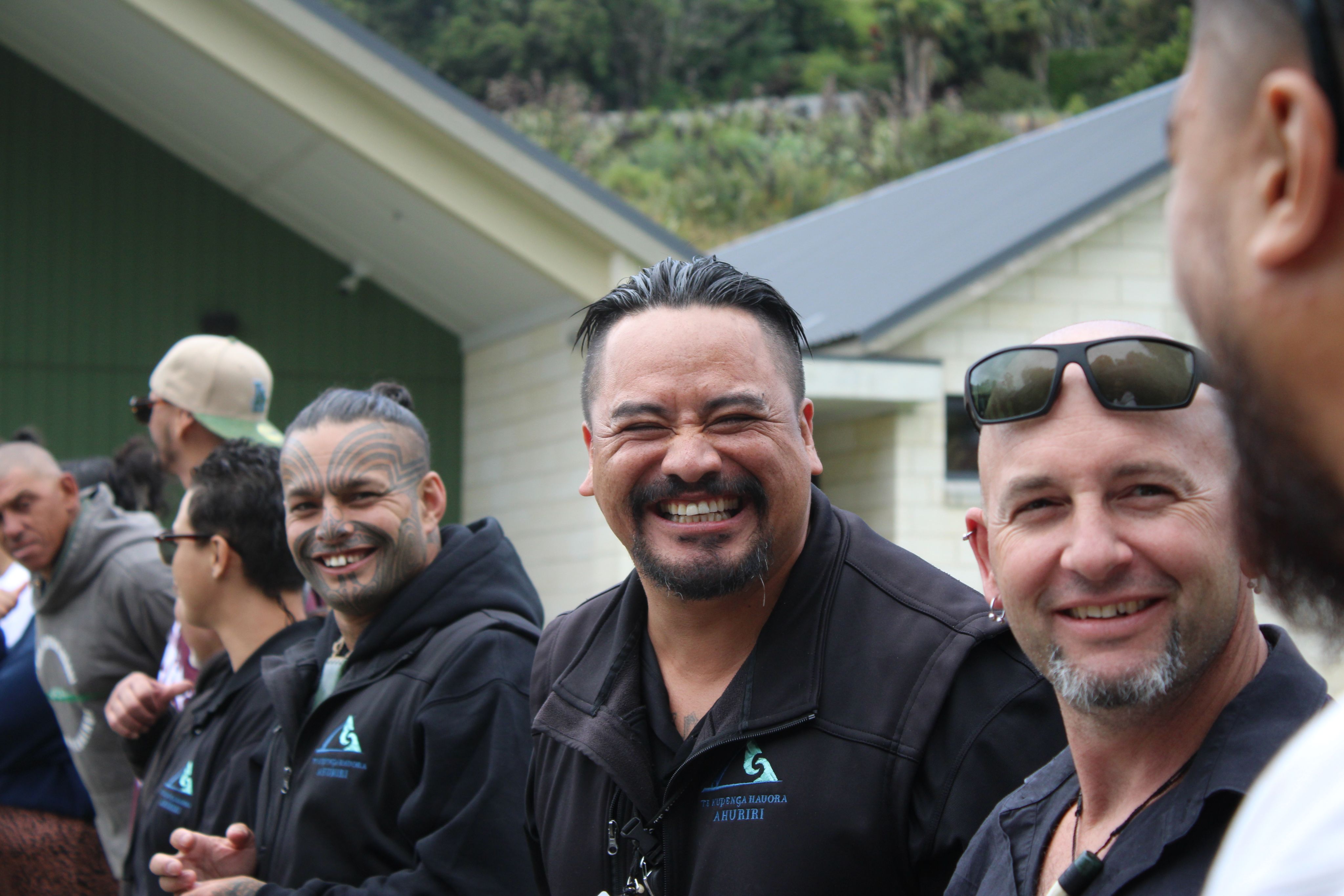

Intergenerational Intimacies
Intergenerational intimacies: A whakapapa conceptualisation of kai outlines the theoretical foundations for the Kai Māori Kai Ora space. This paper broadens and deepens our visions of kai, extending outward to ngā atua, te taiao, te tangata hoki. Here, western nutrition becomes a much smaller element in a very big picture that seeks to reconstitute whānau relationships with their own kai and kōrero tuku iho intergenerationally. Here too, it is necessary to identify and engage critically with settler colonialism and its impacts on our relationships with kai, and the layers of whanaunga that make it up. This is critically important lest we carry the logics of settler colonialism with us into our envisionings of the future.
Alongside the paper, an Intergenerational Intimacies webinar was hosted in collaboration with the Deep South National Science Challenge. The webinar was facilitated by Naomi Simmonds, in conversation with the authors, Haylee Koroi (Toi Tangata) and Hana Burgess.
This webinar was an introduction to the paper, Intergenerational Intimacies: a whakapapa conceptualisation of kai. It was also an opportunity for the authors to connect and deepen their thinking alongside those who had read the paper, to extend the reach of the ideas within the paper to those who may access learning in other ways, and also to bring the paper to the fore again, since its initial release. More than 600 people registered for the webinar, with over 200 in live attendance and a further 225 viewing the recording. The interaction from the audience was awesome and many people sent their thanks and appreciation through, during, and after the webinar.


Ngā Kai Tuatahi o te Motu
As part of the series ‘Ngā Kai Tuatahi o te Motu’ with Joe McLeod, Toi Tangata supported the facilitation of three wānanga across Te Tai Tokerau from Omanaia Te Piiti, to Te Patunga, and Te Uri o Hina marae. We partnered with local knowledge holders and haukāinga, who supported us in the lead up to the wānanga with communications and dissemination of the kaupapa to haukāinga. We also partnered with locally known organisations, including Para Kore and Healthy Families Far North, who supported in the planning and preparation.
Around 160 participants attended across the three wānanga. Some returned to later wānanga to consolidate their learnings. Those who attended reflected an intergenerational interest in this space - from tamariki and rangatahi, to pakeke and kaumātua. This made the learning and whanaungatanga even richer.
Through the kaupapa we were able to build, rebuild, and strengthen whānau relationships with taiao and local environments, as whānau were able to access tūpuna maunga for the first time, in the context of the project. As part of the Te Piiti wānanga, Dallas King organised gathering and foraging at Pukehuia, a tupuna maunga of Ngāti Hau and Ngāti Kaharau. For some this was their first time being on their maunga, and not only that, we were interacting with the maunga through the kai we were gathering.
For kaumātua, much of the kōrero Joe shared was not new, but rather affirmed the things that they remembered doing as children, which seemed to have lost relevance. This was awesome to hear, as it is important that the specific knowledge and experiences of kaumātua are elevated in this work, as those who have living memories of kai Māori. These experiences and memories will be really important in guiding the continuity of this kaupapa within the context of marae moving forward.
Social Media and Database
Toi Tangata is always focused on building the positive reputation of Toi Tangata and the people we work with, while also actively promoting Te Reo Māori. Since last year, we have increased followers over all three of our social media platforms and our overall member database.
Email Campaigns and Ezine
*Our benchmark comes from our current email marketing platform, Campaign Monitor's latest benchmark report for 2022.

Brand Refresh
In late 2023, Toi Tangata's communications team commenced an internal project to update our website. This became a three-part project that included:
1. Brand Refresh
The need to refresh and elevate our brand identity was crucial, aiming to better visually capture the essenec of who we are as an organisation. This mahi was completed by design company, Ira. This Annual Review marks the first use of our new branding.
2. Compilation of a high-quality stock library
Eye-catching visuals and storytelling is crucial for any website. We needed imagery that could tell our stories and authentically showcase the Māori communities that we work with. This mahi was completed by photographer Te Rawhitiroa Bosch and his photographs have been used throughout this Annual Review
3. Updated website with refreshed brand and images
The final part of this project is putting all of this together into a new and functional website. Design Company Fate will be completing our updated website in 2025.
Our Tohu
The Toi Tangata logo was first designed by artist Tuteri Rangihaeata in 2013 when Toi Tangata was established under the trading name of Te Hotu Manawa Māori.
There are two elements to the design. The half-face allows us to look into the mirror and self-reflect, reminding us of the importance and obligation to whānau. The second is the entire face, representing the belief in oneself supported by whānau can help us thrive.
Our tohu is simple yet timeless and continues to express our vision and mission today as it did a decade ago. For this reason, our tohu remains unchanged.
Colours
Consistent use of colour helps to build strong brand recognition. Our original colours were, strong, bold, and distinctly Māori, harking to mana motuhake colours of the 1980s when Toi Tangata was first established.
To reflect the change in direction of our services since then, softer, more modern and playful colours were needed. Our updated palette was chosen to include and better express the mahi we do around taiao and tākaro.
Graphics
A completely new addition to our branding, our graphic is inspired by Te Ara Poutama representing our commitment to fostering healthy living and learning through kaupapa Māori based approaches to wellbeing. As we look upward towards our goals, our goal is to elevate our whānau and hapori through mātauranga Māori, weaving ancestral wisdom into our kaupapa through kori, kai, tākaro and rangahau.



Mātaiao ki Tāmaki
Lifting wellbeing through reconnection with taiao
At its core, Mātaiao is an initiative designed to encourage Māori to reconnect with their ancestral knowledge and the natural environment, with the aim of enhancing wellbeing and cultural continuity. Originating from the Atua Matua model and led by Tapuwaekura, Mātaiao focuses on environmental observation and physical activity to create new learning opportunities for Māori communities. Toi Tangata spearheads the implementation of Mātaiao across kura kaupapa within Tāmaki Makaurau.
This past year has seen us deliver three Mātaiao wānanga to 22 kaiako from kura kaupapa Māori across Tāmaki.
Many of the kaiako who attended the wānanga do not whakapapa directly to the hapū and iwi of Tāmaki whānui. However, learning and understanding the pūrākau and the atua that have presented themselves has provided an opportunity for those living in urban areas to re-indigenise their thinking and feel a sense of connection to the surrounding landscapes. Educating and restoring identity has also served as a means for kaiako to reconnect with their own whakapapa and deities.
Mataaoho
I te wehenga a Rangi rāua ko Papa, i whakaaro ake ngā uri kia huripoki ai te hākui a Papatūānuku kia whakamāmā ai te kōingo o te aroha. Ko te huringa nei e kīia ana ko te huringa a Mataaho. Nā Mataaho rāo ko Whakarūaumoko te mana o te Rū me te Puia. Ko Tāmaki tētahi tāone kua tau ki waenganui i ngā maungarū nei, koia e kīia ai ko Tāmaki Puia. Ki tā te kōrero i nōhia a Mataaho ki Te Ipu o Mataaho (the crater of Mt Eden). Haurua o ngā maunga i konei he whai pānga tāna ki te atua nei a Mataaho. Kua rongonui ake nei te kōrero Tāmaki Herenga tāngata, herenga waka nā ngā wā o ngā tūpuna engari ki tua o te tangata ki te wā o ngā atua ko Tāmaki Puia. Kia Māori ake te titiro a te Māori ki te whenua. He taiao, he atua!
By choosing Mataaoho as our kaupapa matua this past year, we have created a space for Kura Kaupapa Māori of Tāmaki Makaurau to strengthen their relationships, ensure the continuity of traditional Māori cultural concepts, and emphasise the importance of nature in our world.
There has been a shift in perspective, with kaiako and kura recognising the physical impact of urban drift on the plains of Tāmaki Makaurau. Kaiako have been able to identify key landscapes of Tāmaki Makaurau and observe the changes in our taiao over time, which have ultimately provided temporary security and comfort for those living in urban areas. Although the physical aspect of the kaupapa can be misconceived as the priority, kaiako have been motivated to attend wānanga because of the kōrero tuku iho and mātauranga Māori.
Like the ever-evolving landscapes of Mataaho, each change and challenge has allowed us, as a team, to find the best solutions and adaptations for the future of Mātaiao ki Tamaki. Although participation and kaiako consistency prove to be challenging for the kaupapa, there is room for us to continue to build more genuine and meaningful relationships within the kura we are yet to connect with. As stipulated, integration into the school curriculum will be a long term vision and applying the knowledge that we learn in the kaupapa requires more conscious awareness outside of just wānanga - kia mau ki te aka matua, kei mau ki te aka taiepa.




Kaimoana Queens
Alongside Kaimoana Queens, Toi Tangata cohosted a three-part wānanga series - Nāku te Rourou, Nāu te Rourou, Ka Ora Ai te Iwi. Across the three Taitokerau based wānanga, which took place at Waimamaku, Whangaruru, and Omanaia, over 120 wāhine attended - from rangatahi to pakeke to kuia. Wāhine had opportunities to learn a variety of practical skills including gathering, preparation, and cooking of various kaimoana, to the wider principles of safety and kaitiakitanga. Importantly, these wānanga have been a space for wāhine to sit together, to kōrero, and to grow and learn in the context of community.
The first of a three part series took place in Waimamaku and across to Te Ngaire Bay. 43 participants attended from across Aotearoa, including other wāhine groups for areas such as Wellington and Whakatane. At this wānanga wāhine learned to dive, fish, and how to fillet and smoke fish.
Part two of the three part series, ‘Nāku te Rourou’ was hosted by Kaimoana Queens in partnership with Toi Tangata and Moana Futures in Whangaruru. Under the leadership of Moana Futures, participants were guided through the tikanga of haukāinga with regards to gathering, maintaining stocks, and diving safely. This was an awesome opportunity for the KQs team to learn more about other groups, how they function, and how they are funded. Lots of kina were harvested by experienced and first time divers. Also, given the kaupapa of the wānanga, many wāhine brought koha from their māra to contribute to the kai preparations.
The final wānanga, 'Ka ora ai te iwi' took place at Moria Marae in Whirinaki. 60 participants attended with a jam packed schedule, which included foraging for oysters and pipi, fishing from the beach, and learning how to butcher a sheep. Migiwa Ozawa was present as the guest speaker and director of Pacific Mother, whom participants watched together at Manea. The tikanga of the final wānanga was to give back to the iwi and those who have done so much to ensure the mana o te taiao - this consisted of participants cooking for and catering to kaumātua, who absolutely loved to be served, no less with some of their favourite foods from fish heads to seaweed and pūpū.
Healthier Lives Implemenation Network
Toi Tangata has been fortunate to be part of the Healthier Lives network as part of the National Science Challenges. Healthier Lives is one of 11 categories funded to tackle some of the big topics concerning health, science and technology. Partnering with the University of Waikato and South Waikato Pacific Islands Community Services Trust (SWIPCS), Toi Tangata has been testing the formation of a national health implementation network amongst Māori and Pasifika health services.
Toi Tangata has been working hard to increase research partnership capabilities over the last few years and has been part of many initiatives to help increase the knowledge base about workable physical activity and nutrition for whānau.
This year, the Toi Tangata research team completed Phase Three of the research project. This involved recruiting Hauora Māori providers to implement a health programme of their choice from the Network.
Two Hauora providers agreed to be part of this kaupapa and implemented a project that supported their communities through removing the barriers to physical activity for whānau. Te Papa Tākaro o Te Arawa implemented TAHO (Te Arawa Haka Ora), an initiative to support kaihaka to prepare for the Te Arawa Haka Regionals. Kaihaka from across the kapa in Rotorua were subsidised for 12 weeks to attend local gym facilities. Te Hiku Hauora in Kaitaia had a similar approach but focused on māmā who wanted to improve their relationship with exercise and physical movement. Te Hiku Hauora provided a safe space for māmā returning postnatally to exercise with a positive and social environment.
Toi Tangata Research Team
Kaiwhakahaere Matua, Darrio Penetito-Hemara, and researchers, Renei Ngawati and Tori Te Puke, made up the research team for the Healthier Lives Implementation Team (Māori). Alongside John Oetzel (Principal Investigator) and the SWPICS team, Toi Tangata was able to share research insights and approaches to working with Hauora Māori.
One of the many positive challenges was adapting research approaches to suit the hauora and whānau participants. As the research team wanted to ensure that the programmes implemented were reflective of the lived daily realities of whānau Māori, insights captured through interviews with both research and hauora staff were invaluable in understanding the everyday realities for whānau, including how social and economic factors impact health outcomes. The programmes captured and addressed the barriers and facilitators for whānau to participate, including cost, whakamā and self-efficacy.
The Healthier Lives Implementation Network project work is currently concluding with research publications and outcomes being analysed and drafted. Toi Tangata has been proud to be involved in a project that will potentially be a space for Hauora Māori and Pasifika Health Services to share latest research outputs, programmes of work and new approaches to working with communities. As the demand for kaupapa Māori-based services grows, the goal is being able to share insights, knowledge and successes across the hauora space through an online network.
Financial Overview
Finance, Audit & Risk (FAR) Committee
I am pleased to present an overview of our audited performance, financial Indicators and risk enhancements for the 2024 financial year.
The Performance Report for the year ended 30 June 2024 has been audited by UHY Haines Norton (Auckland) Limited Chartered Accountants. Again, we are delighted to announce that an unmodified Independent Auditor's Report has been issued for the year.
The establishment of financial indicators, including more detailed budgets by cost centres, has significantly improved our financial literacy capacity. This has allowed us to maintain a holistic view of our financial situation while ensuring the importance of each contractual relationship is not overlooked.
In regards to risk enhancements, over the past year, we have acknowledged the necessity for more effective risk management. Consequently, we have implemented significant improvements to our processes. Our refined approach to risk management now better equips us to navigate uncertainties and seize opportunities.
These improvements and enhancements have positioned us strongly as we continue to grow and navigate our journey in 2025. Striving for greater outcomes for our kaupapa, we look forward to the opportunities and challenges the new year will bring.
Pania Newton | Tarahitī Poari & Heamana FAR Committee
Ngāpuhi, Te Rarawa, Waikato
Financial Performance Indicators
Ko wai Mātou
At Toi Tangata, our strength lies in the people who drive our kaupapa, from our passionate kaimahi to our visionary board. Together, they bring a wealth of expertise, cultural insight, and strategic guidance to promote holistic health and wellbeing in our communities. Meet the dedicated team and leaders who are steering our journey toward positive change.


